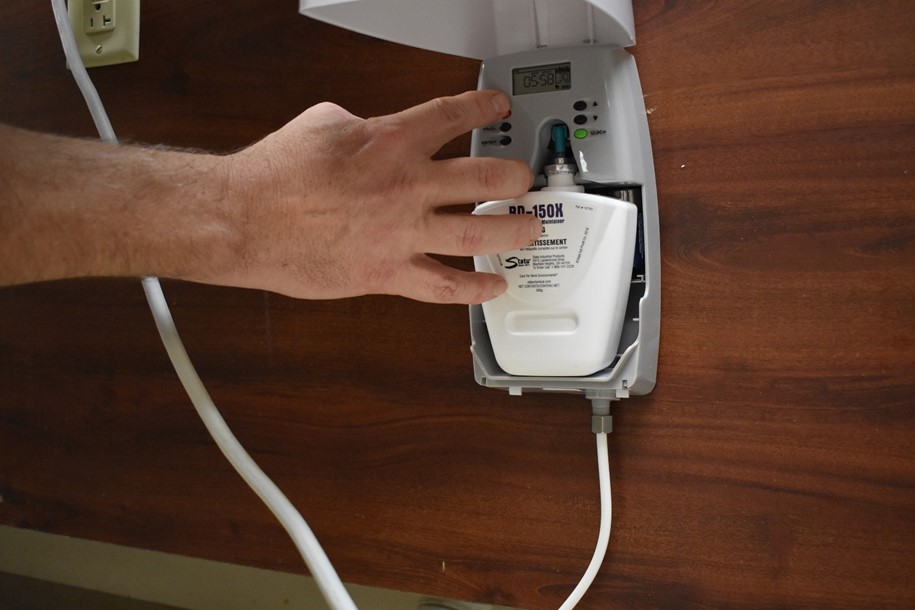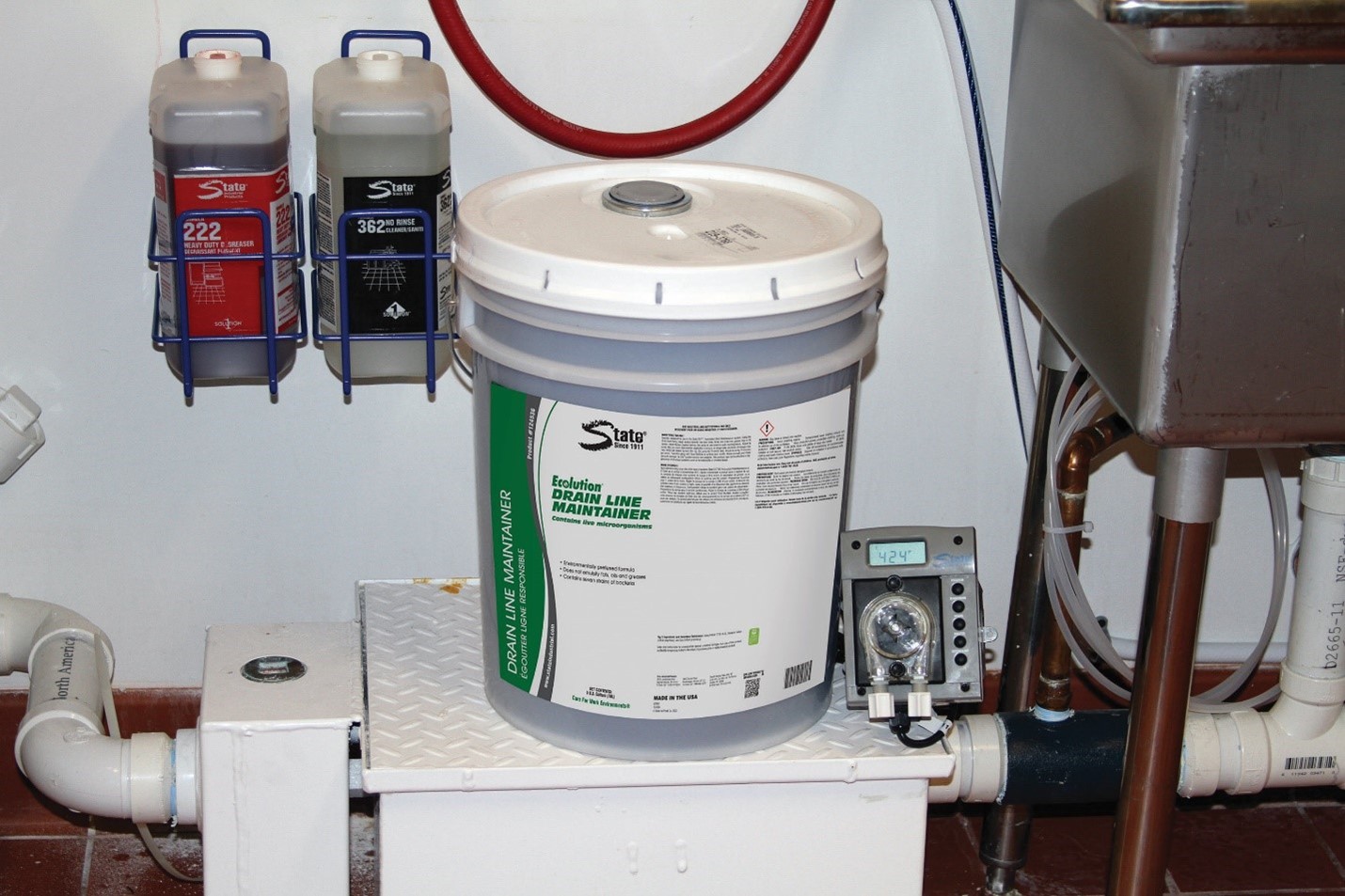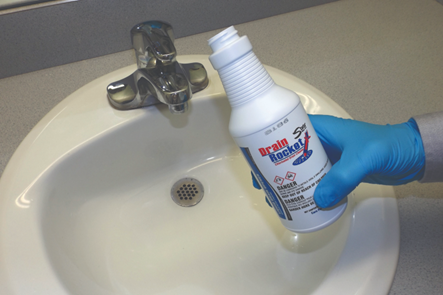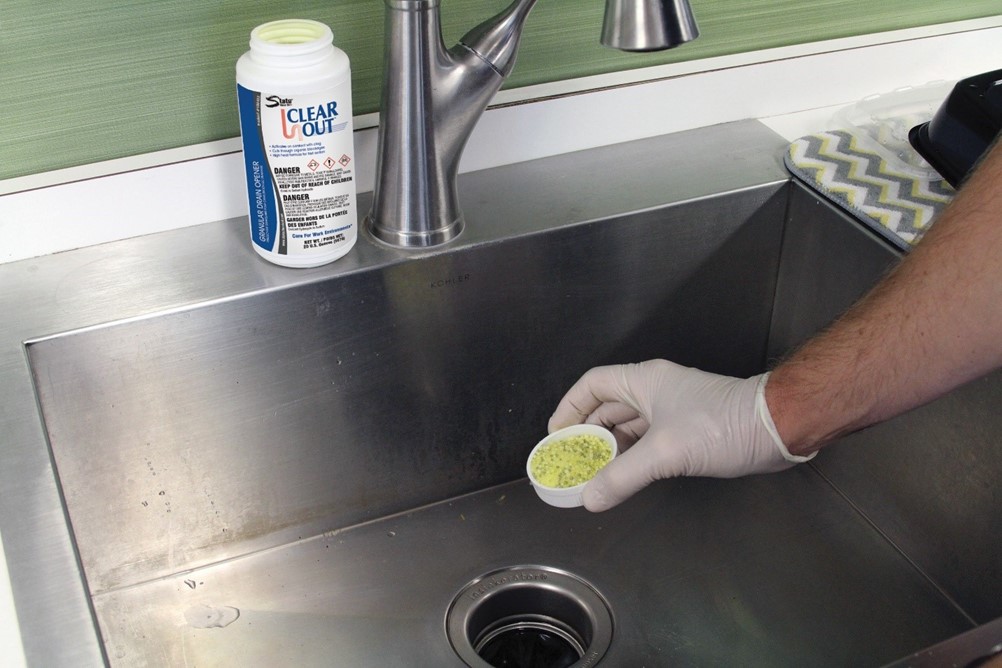How Much Drain Chemical Does My Facility Need & How Fast Will It Work?
How Much Drain Chemical Does My Facility Need & How Fast Will It Work?
You want your drain care products to be easy to use and to work as quickly as possible. Drain maintenance is not your primary role or responsibility, your facility is short-staffed, your day is packed from beginning to end; you just want the process to be as painless as possible. But how do you know what it’ll actually look like day-to-day?
Since 1911, State Chemical has been providing chemical solutions to clients and training them in how to use these solutions. We know your first priority is running your facility, so while you care about healthy drains, we understand that you’d rather get the hassle out of the way.
To give you an idea of what to expect with our drain care products, we will explain how much product you’ll need to use and how quickly it will work. After reading, you’ll know whether our services will logistically work for your facility.
Drain Maintainers vs. Drain Openers: Which Should You Use?
Before we get into the product application and speed, we must first establish whether you’re looking for a drain maintainer or a drain opener.
A drain maintainer is a chemical product that will regularly be released into your drain either by hand or via a feed pump. It serves as a preventative maintenance measure to keep your drain clear of fats, oils, and greases (FOGs) and other organics before they can form into clogs.
Meanwhile, a drain opener acts as a reactive measure to clear drains once FOGs have already led to slow or clogged drains. Drain openers are harsher, more intense products that should only be used when you’re already experiencing problems, so you won’t use them as frequently as you would a drain maintainer.
How Much of a Drain Maintainer Should I Use?
If what you’re looking for is a drain maintainer, you’re probably concerned about what regularly using it entails. The answer to this question will vary depending on your drain’s level of usage and the type of drain maintenance you choose.
Manual Drain Maintenance
If you prefer to manage your drain maintenance yourself, you’ll be completing manual drain maintenance, which involves you manually pouring a drain maintainer down your drains on a regular basis.
The frequency that you pour will vary based on drain usage, buildup severity, and the size of your facility. For example, the kitchen of a large restaurant that experiences a lot of drain usage and FOG buildup will use drain maintainers more frequently than a legion hall that only hosts dinner once a week.
Usually, you’ll use eight ounces of our drain maintainers at a time. We recommend conducting manual maintenance at least bi-weekly, so that would be at least 16 ounces of a drain maintainer per month.
Again, this will vary based on your individual situation. For a drain that sees a lot of FOGs, this maintenance could be as frequent as every day. But for standard situations, eight ounces every two weeks is a good rule of thumb.
Automated Drain Maintenance
This will look a little different for automated drain maintenance. Automated maintenance means that you’re using a feed pump to regularly dispense your drain maintainer. In these situations, the amount of product used can vary drastically.
Feed pumps can be programmed to dispense as frequently as you’d like within a week. For example, a restaurant could schedule their feed pump to dispense more on weekends to offset the higher drain usage. However, most facilities that use a feed pump will use between 10 and 20 ounces of their drain maintainer per day.
How Quickly Will My Drain Maintainer Work?
You’re probably most eager to know when the product will actually start clearing your drains. Again, this depends on the type of product you choose.
Emulsifiers
Emulsifiers liquefy buildup so that it can pass easily through your pipes, and they’re remarkably effective. If you’re using an emulsifying product like Grease-B-Gone, it will start working immediately after it enters your drain.
One thing to keep in mind with emulsifiers is that they do not continue working after this initial reaction. After they pass the buildup through your pipes, emulsifiers become diluted, and the buildup will reform later in the sewer.
Biologicals
Meanwhile, biological drain maintainers are bacteria-based, and the bacteria needs some time to “activate” before it becomes effective. Biologicals, like Ecolution Drain Line Maintainer, start to work within a few hours of entering your drain and reach their full strength after 24 hours.
This waiting period is a downside, but unlike emulsifiers, biologicals are more effective at treating the root of the problem. Bacteria consume buildup in your drain and grow their colony off it. Where emulsifiers stop working after reaching the sewer, bacteria keep the drains clear as long as they have a food source (FOGs). Even if you stop pouring a biological into your drain, the bacteria from before will continue working if conditions remain livable.
How Much of a Drain Opener Should I Use?
If you’re looking for a drain opener rather than a drain maintainer, you have the same question: how much product do you need to use? And again, this will depend on whether your drain opener is liquid or granular.
Liquid Drain Openers
For a liquid drain opener, such as Drain Rocket, you’ll usually use the whole bottle at once. Drain Rocket, for example, comes in a pint bottle (16 ounces), so when you use it, you just pour the whole bottle down the drain. Do not use more than two bottles at one time, or you risk a violent chemical splash back.
However, you won’t necessarily always use the whole bottle for a harsher product, such as Scram. In some cases, you’ll use the full quart bottle (32 ounces) of Scram. For example, if your drain dimensions are 2-3/4 to 4 inches, use a full quart. However, for toilets, we recommend only using one pint (16 ounces). And for smaller drains, we recommend only eight ounces.
We know it can be overwhelming trying to figure out how much product to use for your situation. For this reason, we highly recommend you contact State Chemical to assess your situation individually and help you decide what and how much to use.
Granular Drain Openers
Meanwhile, for a granular drain opener like Clear Out, you should only use a capful (20 grams) at a time. Clear Out comes in a 20-ounce bottle, so this will mean only using a little bit each time.
There are no cases in which this amount should vary. Clear Out is a powerful product, and using higher amounts could put you at risk of violent splash back and chemical burns.
How Quickly Will My Drain Opener Work?
Now that you know how much of a drain opener you may need, how fast will it clear your drains?
Liquid Drain Openers
Liquid drain openers like Drain Rocket and Scram start working immediately, but you’ll need to give them a bit of time to sit so that they can work fully.
For Drain Rocket, you should let it sit and work for 15 minutes. Then, flush the drain with warm water to ensure that it has moved fully through the drain.
Meanwhile, with Scram, if you’re using a full quart (32 ounces), let it sit for 10–15 minutes. If you’re using a pint, let it sit for 10 minutes. If you’re using eight ounces, let it sit for five minutes.
These measures will ensure that the drain opener works as effectively as possible and will keep you and your pipes safe.
Granular Drain Openers
Granular drain openers like Clear Out will also start working immediately, but as with liquid drain openers, they’ll need time to sit to work fully.
After using Clear Out, let it sit for 30 minutes and then flush it with several cups of cold water. If the water does not clear after doing this twice, call a plumber. Do not attempt to use Clear Out again because you’ll risk chemical splash back.
Purchase the Best Drain Care Solution for You
When buying a drain care product, all you want is something quick and effective. Now that you know how much of each product you’ll need and how quickly it’ll work, you’re ready to explore how much a drain care agreement with State Chemical costs.












